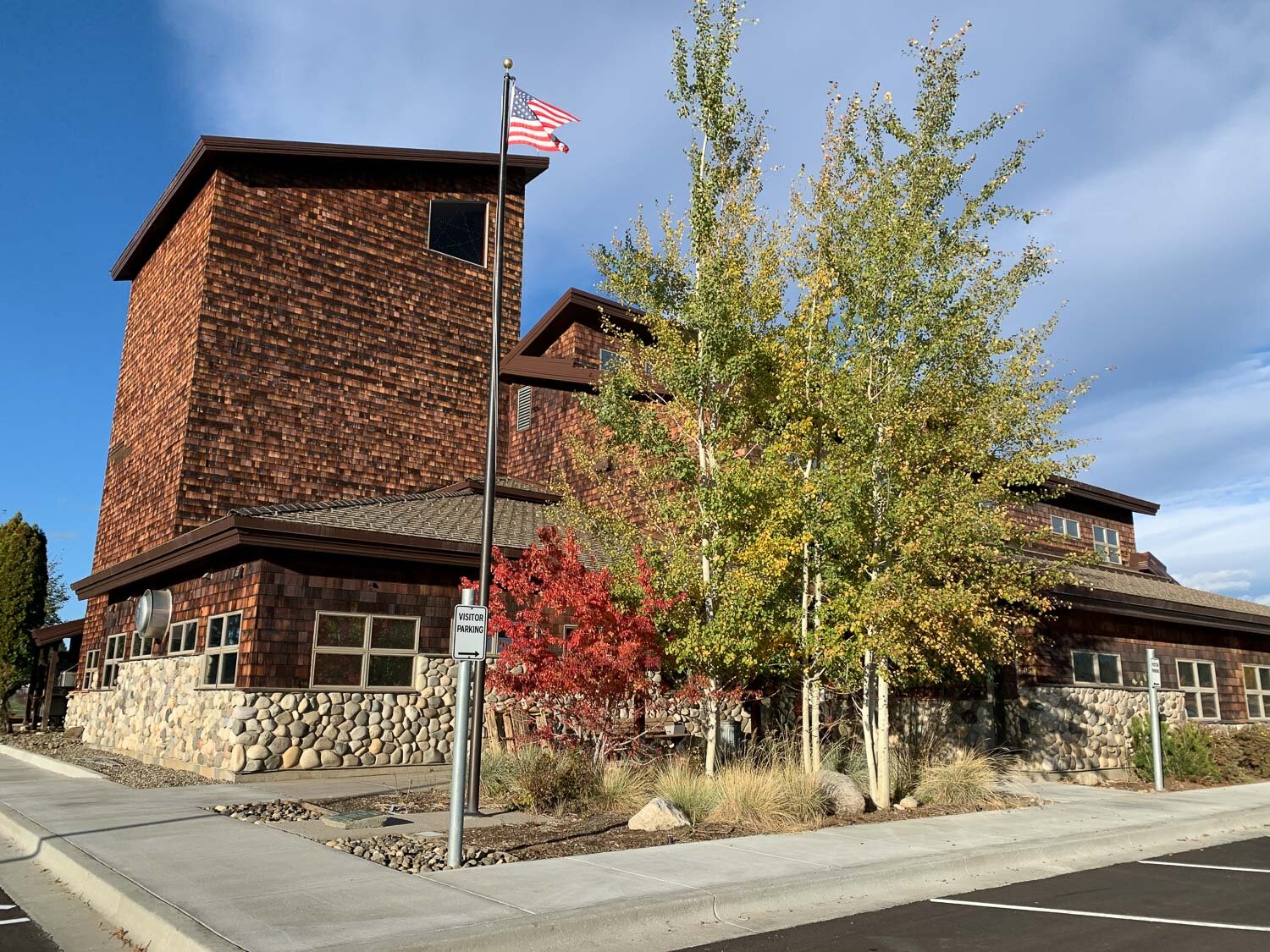Idaho Trip - Day 2-1/2
/After our hike (described here) we went back to McCall and Chris gave us a private tour of the McCall Smokejumper Base.
The season is over now. Chris was still there finishing additional EMT training, but most of the others have left. When the base is active the smokejumpers’ personal items are stowed in the blue lockers, and their jumpsuits (I’m not sure that is the official terminology) and gear are arranged on hooks along these racks. As a team of smokejumpers is dispatched they remove their gear to get on the plane.
This space adjoins the room where the lockers are. The shelves contain all the things that might be launched from the plane with parachutes, from sleeping bags to chainsaws to food and medical equipment.
This is a random comment, but when I see these boxes with the chainsaw sticking out the end it reminds me of a book I read over and over to my kids (Chris included). Do any of you moms remember the pop-up book, How Many Bugs in a Box? The last page, I believe, showed “10 Saw Bugs”.
One mode of transportation to get around the base. There are a number of bicycles that are used by all, but this is specialized to carry gear. Clever.
Sleeping bags above. There are instructions for packing supply boxes with food and other items.
More gear.
These are streamers that are used before the jumpers leave the plane to show the wind speed and direction. I think they drop one of each color at a time so that at least one will be more visible.
There is a gadget on that table that is used to roll the streamers to an exact size.
This is the room that can is enclosed by the tower seen in the photo of the base from the parking lot.
After each jump the parachutes are clipped to rails and lifted for inspection.
The fabric is inspected as well as making sure that all the lines are organized and not twisted or knotted.
Any parachute or other gear with a flaw must be fixed. This is just one rack of fabric used for repairs.
All the parachutes and gear are repaired at the base and they also make a lot of the bags and other items they use.
There are a dozen or so heavy duty sewing machines of various brands and styles. I found out that this was not Pete’s work station but the machine is named Pete.
Part of more advanced smokejumper training is in how to repair the gear.
Some of the components used in repairs or construction.
There is a whole room dedicated to rigging parachutes—that is spreading them out and folding them in a very precise way to pack for use. An important part of training is learning this task. Would you want to jump out of a plane using a parachute folded by someone who hadn’t had training in the precise way to pack the parachute so that you can count on it opening correctly? Hours and hours are spent on this training and practice.
This is the other half of that room where parachutes are packed.
Chris took on a project this summer to create this display that included all the season’s smokejumpers and their home towns.
This is another view that shows the tower where the parachutes are hung to dry and for inspection.
One of the planes used to transportr smokejumpers.
A tribute to the gear used by the original smokejumpers in the 1940’s.



























